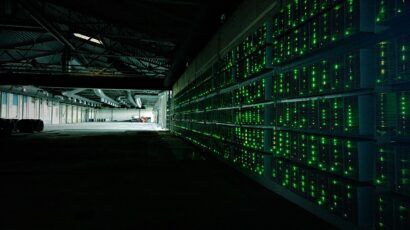‘The air is killing us all’: What will it take to get India to tackle its perpetual pollution problem?
By Hannah Ellis-Petersen | December 2, 2024
 Photo by Shubham Sharma on Unsplash
Photo by Shubham Sharma on Unsplash
Editor’s note: This story was originally published The Guardian. It appears here as part of the Climate Desk collaboration.
As winter sets in across north India – usually around the time of the country’s biggest festival, Diwali – the air in Delhi becomes thick and brown with visible pollutants. To breathe in is to taste toxic fumes. The visibility is often so bad that famous monuments are reduced to smoky blurs on the horizon. It is, as one writer once put it, as if a burial shroud has cloaked the city.
For a decade, Delhi has regularly held the dishonourable title of being the world’s most polluted city, with other Indian cities close behind. A recent study calculated that the 30 million people living in and around the capital could have almost 12 years taken off their lives due to its catastrophic health impacts.
“The air is killing us all,” said Hartosh Singh, in between deep rasping coughs, as he pushed his fruit cart through Delhi’s busy Bhogal market. “The government is leaving us to die so that India can grow big. Every year more cars, more buildings, more rubbish, more factories, filling the air with filth – is that worth more than our lives?”
Recently, Delhi’s air quality index (AQI) – which indicates the level of pollutants in the air – went as high as 1,700 in some parts of the city. At the worst point of Beijing’s pollution crisis, the highest the AQI reached was 1,300. The maximum index deemed healthy by the World Health Organization is 50.
Much of the blame for the pollution is directed at farmers who, due to a change in legislation in 2009, have only a short turnaround between harvesting their rice crops and planting wheat. The quickest and cheapest way to prepare the fields is to burn them – a practice known as stubble burning. The wind blows the polluting smoke from these fires from the fields of Punjab and Haryana over into Delhi, where, due to the meteorological conditions, it often hangs over the city in a thick cloud.
The practice was made illegal in 2015 but still continues, though somewhat abated. In previous years, stubble burning contributed up to 50% of the Delhi’s pollution in this early winter period. It has now come down to about 30%.
Experts and environmentalists say farmers are only a small part of the problem and that treating pollution as seasonal – with a singular cause and geographically restricted to one city – is hampering efforts to solve it.
“We have to stop treating air pollution as a winter problem or a farmer problem,” said Avinash Chanchal, deputy programme director at Greenpeace South Asia. “Data clearly shows the city suffers from high pollution almost throughout the whole year. It’s coming from the transportation sector and the millions of cars on the roads; it’s coming from coal-burning power plants; it’s coming from waste that is piling up in Delhi’s landfills or being burned; it’s coming from all this non-stop construction of highways and flyovers. Until we target all of those sectors, we will never get cleaner air.”
Chanchal emphasized that the longer India waited to tackle the root causes of air pollution, the greater the economic and health costs. “There’s no doubt that we are now in a public health emergency,” he said. “But the seriousness of the government to act is not there.”
As the pollution crisis hits it annual peak, authorities bring in emergency methods, ranging from closing schools to stopping construction and banning highly polluting vehicles from the roads. Costly smog towers, which have little scientific backing, have been constructed to supposedly suck the pollution from the air – to little effect – and this year the Delhi authorities deployed drones to spray water into the air.
Despite the drastic health impacts, pollution is still not a major political issue in India and rarely features in election campaigns.
Figures show that it is the millions of cars, scooters and auto-rickshaws on Delhi’s roads that are the worst emitters of PM2.5, the deadly small particles that pose a particular health risk. But there are few incentives to get residents out of private vehicles: the metro is seen as poorly connected and expensive and the bus system is underfunded and overloaded.
Sunil Dahiya, founder and lead analyst of the climate thinktank Envirocatalysts, said authorities needed to enforce regulations on big polluting industries, including the country’s coal-fired power stations and steel plants.
“So much blame is put on individual farmers, but where’s the accountability for these big polluters in the power sector who are freely flouting the laws and being given free rein to keep pumping out pollutants into our air?” said Dahiya. “We need targets to bring down pollution in every sector, and there needs to be penalties if they don’t comply.”
Bhargav Krishna, a researcher at the Delhi thinktank Sustainable Futures Collaborative, said pollution was an “inconvenient problem” for India to have at a time when it is focusing entirely on growth, trying to bring millions out of poverty and providing enough power to meet fast-growing demands.
Krishna also said that while much of the focus was on Delhi, “pollution is a pan-India problem” and needed to be dealt with on a national level. A recent Greenpeace report found that more than 80% of India’s cities had polluted air.
“There’s a need to reckon with the fact that this is going to be a long slog,” said Krishna. “We need to tear off the Band-Aid and tackle the wound underneath, to fix the structural issues, if we ever want India to breathe clean air again.”

Together, we make the world safer.
The Bulletin elevates expert voices above the noise. But as an independent nonprofit organization, our operations depend on the support of readers like you. Help us continue to deliver quality journalism that holds leaders accountable. Your support of our work at any level is important. In return, we promise our coverage will be understandable, influential, vigilant, solution-oriented, and fair-minded. Together we can make a difference.
Keywords: air pollution, cities and climate change, clean air, pollution, smog
Topics: Climate Change















